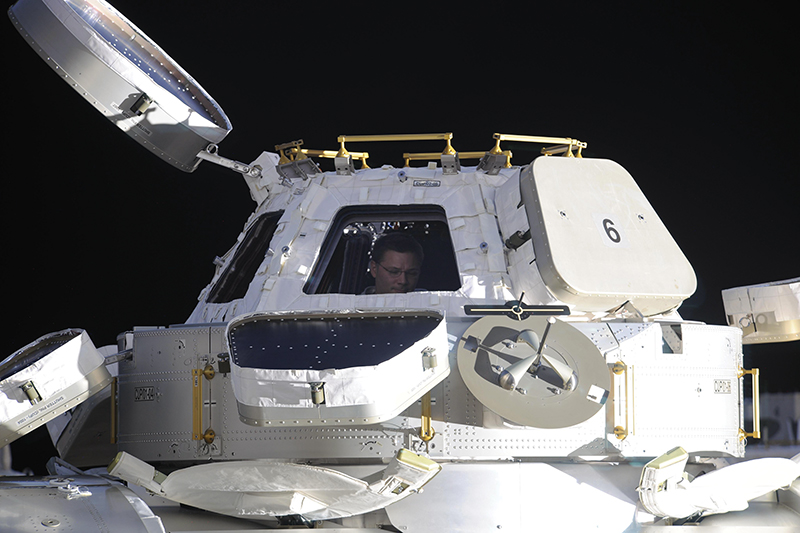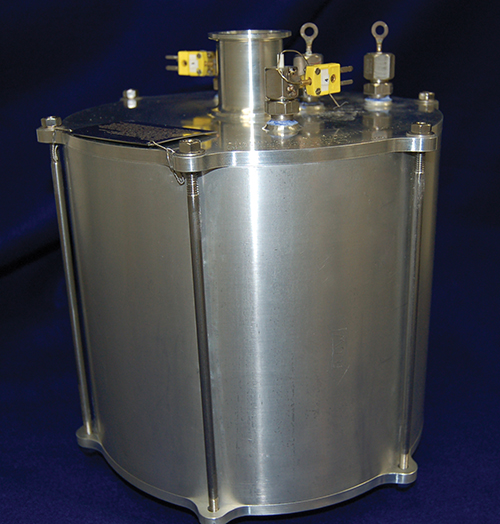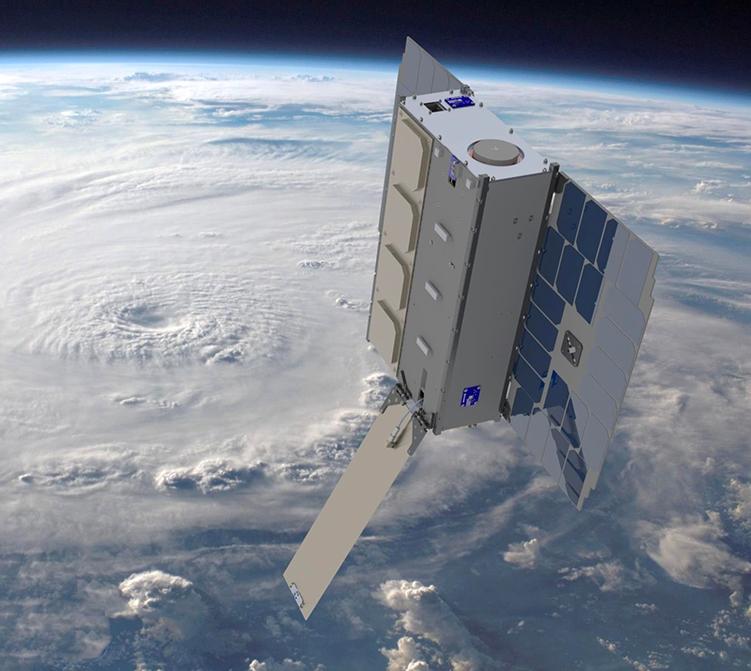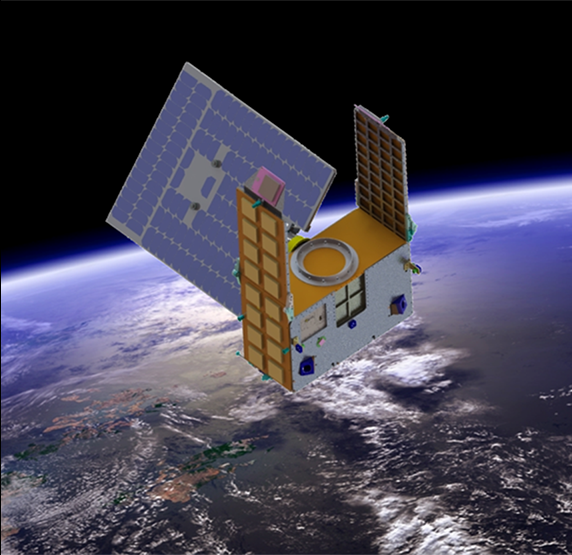
Catalyst Substrates Remove Contaminants, Produce Fuel
NASA Technology
“A spacecraft is the ultimate tight building. We don’t want any leaks, and there is very little fresh air coming in,” says Jay Perry, an aerospace engineer at Marshall Space Flight Center. “As a result, there is a huge potential for a buildup of contaminants from a host of sources.”
Inside a spacecraft, contaminants can be introduced from the materials that make spacecraft components, electronics boxes, or activities by the crew such as food preparation or cleaning. Humans also generate contaminants by breathing and through the body’s natural metabolic processes. As part of the sophisticated Environmental Control and Life Support System on the International Space Station (ISS), a trace contaminant control system removes carbon dioxide and other impurities from the cabin atmosphere. To maintain healthy levels, the system uses adsorbent media to filter chemical contaminant molecules and a high-temperature catalytic oxidizer to change the chemical structure of the contaminants to something more benign, usually carbon dioxide and water.
In the 1990s, while researching air quality control technology for extended spaceflight travel, Perry and others at Marshall were looking for a regenerable process for the continuous removal of carbon dioxide and trace chemical contaminants on long-duration manned space flights. At the time, the existing technology used on U.S. spacecraft could only be used once, which meant that a spacecraft had to carry additional spare parts for use in case the first one was depleted, or the spacecraft would have to return to Earth to exchange the components.
Partnership
A North Haven, Connecticut-based company, Precision Combustion Inc. (PCI), previously worked with NASA’s Glenn Research Center (Spinoff 1998) to prove the viability of its Microlith technology, a very thin substrate consisting of short metal channels resembling screens or meshes, for catalytic reduction of emissions from combustion. Afterward, the company’s commercialization efforts focused on using the Microlith substrate in a catalytic combustor for gas turbines and in a catalytic converter for automotive exhaust treatment applications.
“Precision Combustion had this idea of having a catalyst coating on the Microlith substrate that could be added to an existing automotive catalytic converter,” says Perry. “Because it is made out of metal, the Microlith substrate can heat very rapidly and thus eliminate the cold start emissions of an automobile, which is when most of the pollution happens.”
Several years after working with Glenn, PCI worked with Marshall through the Small Business Innovation Research (SBIR) program to adapt its Microlith technology to provide a lighter and more durable rapid start-up trace contaminant removal system for spacecraft, and to meet NASA’s need for a regenerable contaminant control technology. A few years later, PCI pursued additional SBIR work with Marshall to integrate an adsorptive coating on the Microlith substrate to remove additional chemical compounds as well as carbon dioxide.
“We took something that Precision Combustion was working on for an automotive application for cold start emission control and then pulled it into our need for use in a spacecraft,” says Perry. “By passing an electric current through the expanded metal, the system is up to operating temperature within less than a minute. That means that the oxidation of trace contaminants happens quickly, rather than an hour or two after powering the unit. Another advantage is the Microlith catalytic oxidation approach was practically an all-in-one contained device. With Precision Combustion’s technology, it could go from a 35-pound mass to less than 10 pounds.”
Development testing successfully demonstrated the Microlith substrate for a regenerable carbon dioxide removal and trace contaminants control application. While the funding for further development and deployment of the technology ended, according to Perry the technology remains the leading catalytic oxidation technology for trace contaminant control for future space missions.
Benefits
Tony Anderson, the marketing and business development manager at PCI, says the SBIR work with NASA has been paramount to enhancing Microlith technology. “The interaction between PCI and NASA has been ongoing for almost 20 years now. On the catalytic oxidizer project, it has been invaluable to have the collaboration to ensure the success. Now we are using the technology as a springboard for other products.”
Due to the company’s commercial success spanning more than a decade, it has received the “Tibbetts Award” twice—in 1998 and in 2006—in recognition for exemplifying the types of business, economic, and technical development goals of the SBIR program. PCI also received the “Army SBIR Achievement Award” in 2008 and 2010 for applications of its Microlith technology for military applications. The U.S. Army conducts its annual awards program to recognize efforts that exemplify the SBIR goal of bringing innovative technologies and products to the marketplace.
Today, PCI develops, manufactures, and markets catalytic devices for clean and efficient combustion, emissions controls, and chemical manufacturing applications. As one of the company’s core technologies, the Microlith substrate can be coated with a variety of materials utilizing proprietary methods from PCI, including catalyst or adsorbent materials, to promote chemical reactions and to remove environmental contaminants.“Microlith substrate is a platform technology. With that, there are many different things we can do with it. A lot of the NASA support helps us to make the platform sturdy,” says Subir Roychoudhury, director of Microlith Products at PCI.
In particular, the NASA-supported research has demonstrated that a certain coating on Microlith metal mesh elements can effectively adsorb a number of contaminants. Another benefit is that the technology is more compact and lightweight than the competing technology. Lastly, the Microlith substrate can be customized to target individual contaminants, and can also be integrated into existing systems.
Soon after working with Marshall, the National Science Foundation started funding PCI to do fuel reforming and processing incorporating Microlith technology. That led to additional fuel reforming work with the Department of Defense, which encompasses a large portion of PCI’s business today.
Roychoudhury explains how the Microlith reactor is being used for efficient hydrogen sulfide removal in fuel reforming for fuel cell systems. “The work with fuel reforming and fuel processing takes hydrocarbon materials and runs them through a catalyst that is supported on the Microlith. It converts hydrocarbon to syngas, which can operate fuel cells. Utilizing the same Microlith technology that we developed through NASA, we make fuel for fuel cells.”
Microlith technology is also being incorporated into development efforts for fuel reforming on ships for the U.S. Navy, mobile applications for the Army, and fuel processing for fuel cells for U.S. Air Force aircraft, as well as several civilian applications.
Microlith® is a registered trademark of Precision Combustion Inc.

While working with NASA on contaminant control technology, Precision Combustion Inc. advanced its Microlith technology and then incorporated it into products such as the Regenerable Microlith Adsorber, seen here.

Inside the International Space Station’s (ISS) Cupola, Doug Wheelock, Expedition 25 commander, looks down while preparing his camera for a shot of Earth. The cabin atmosphere inside the ISS stays clean and safe thanks to its sophisticated Environmental Control and Life Support System.













